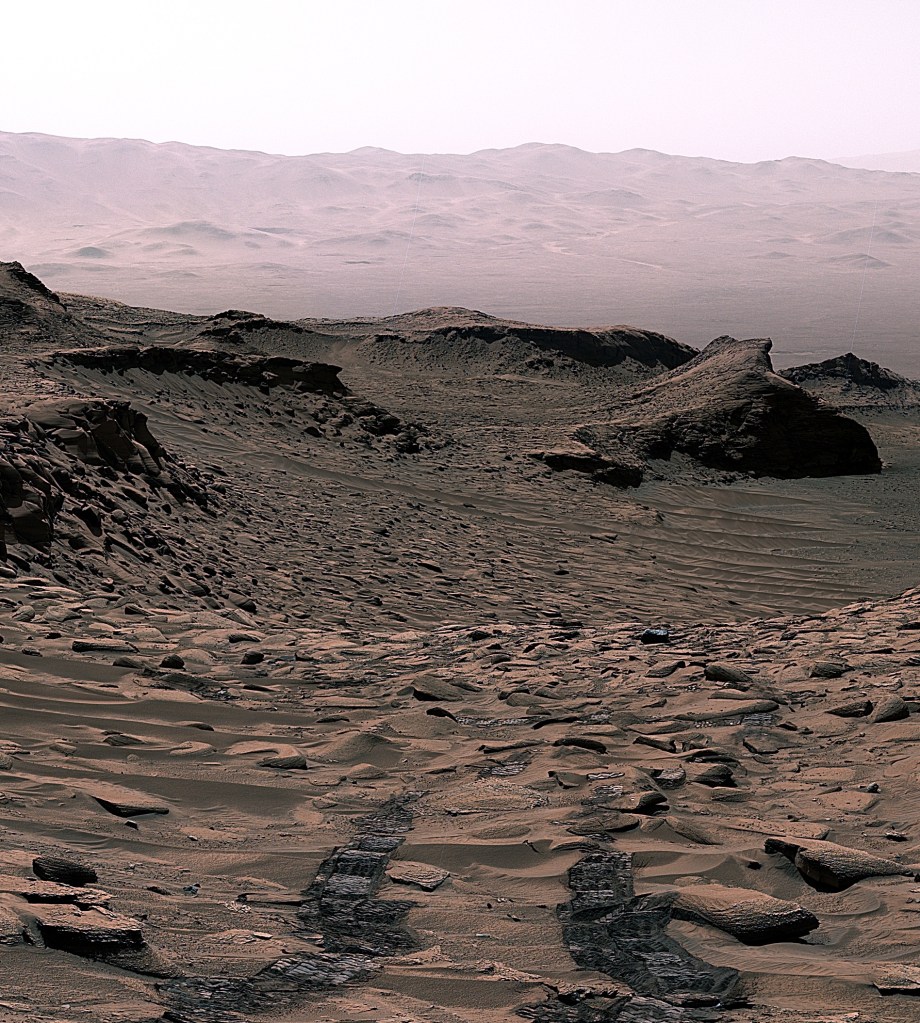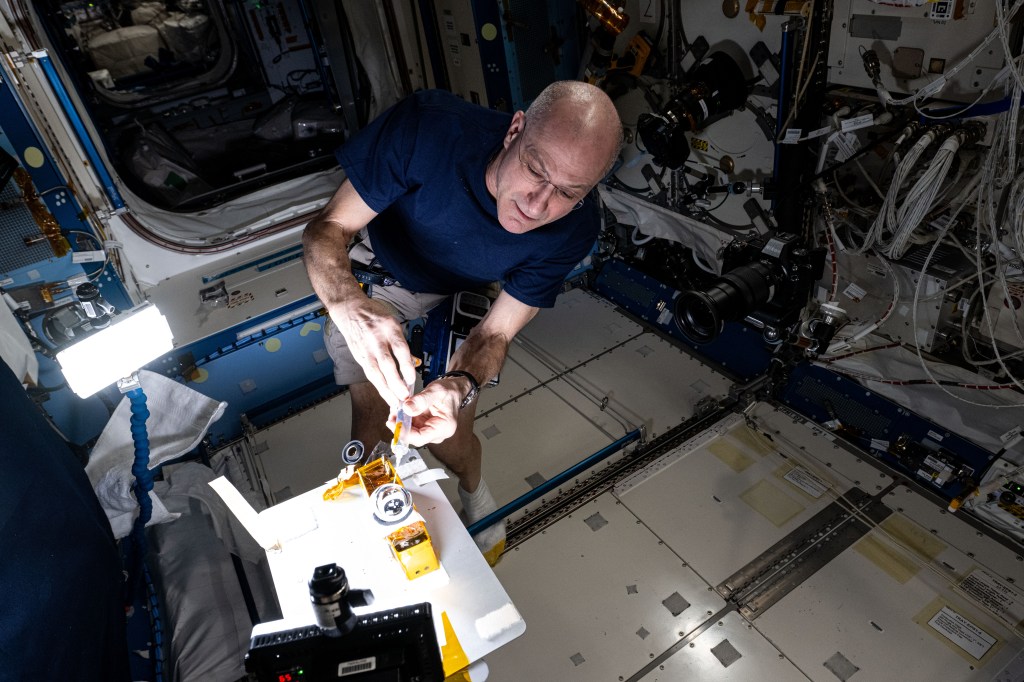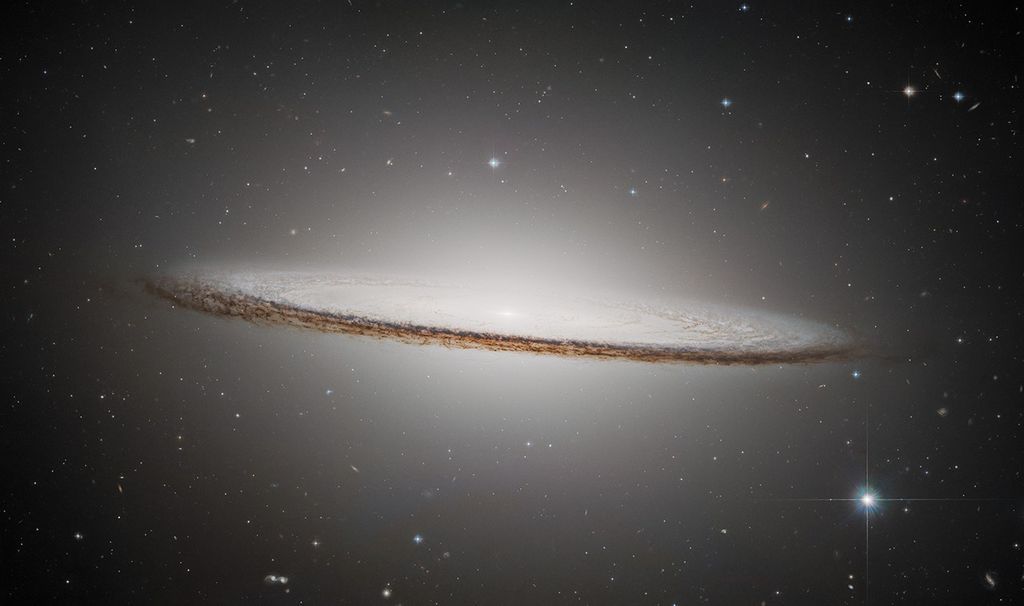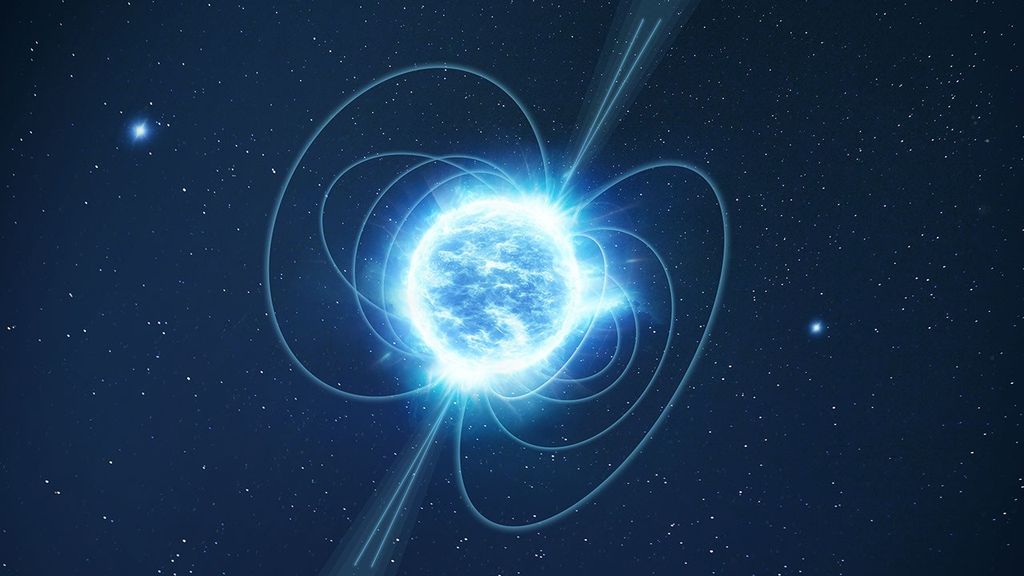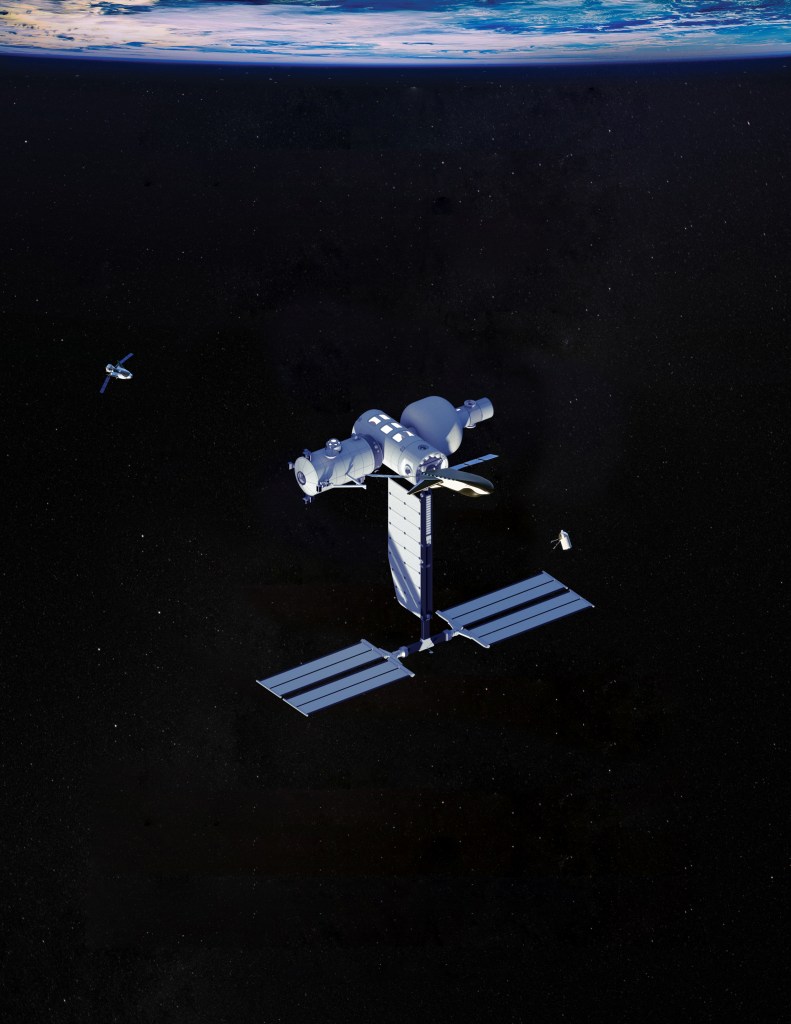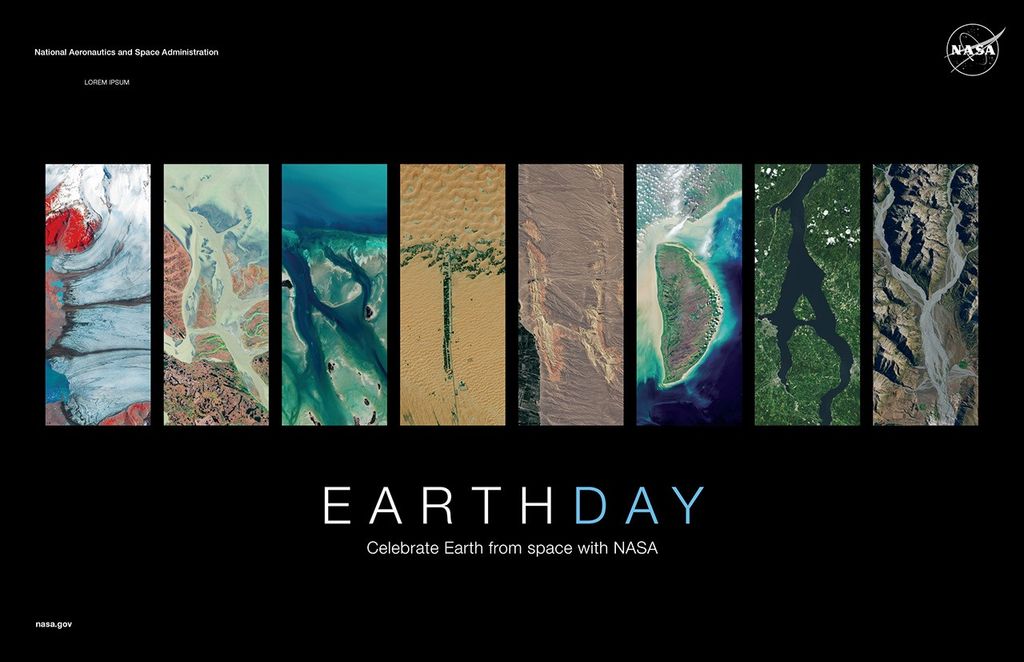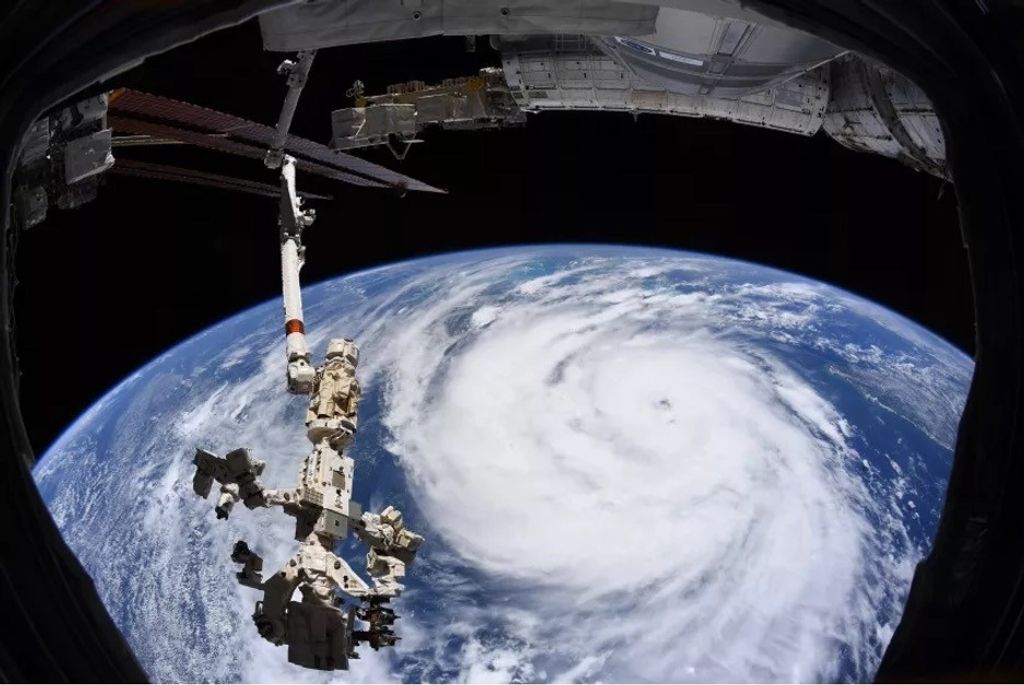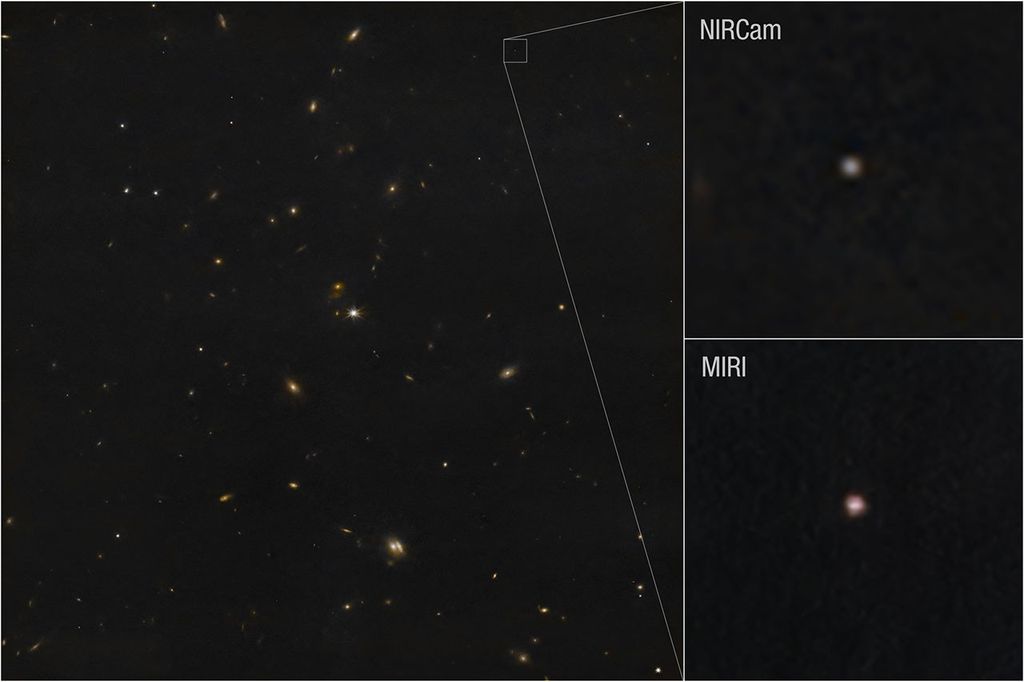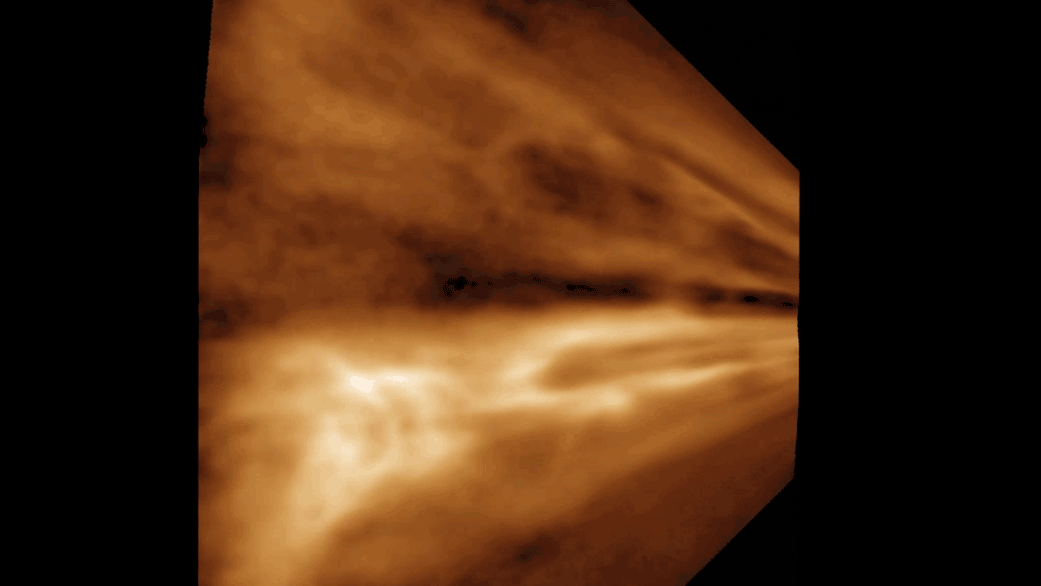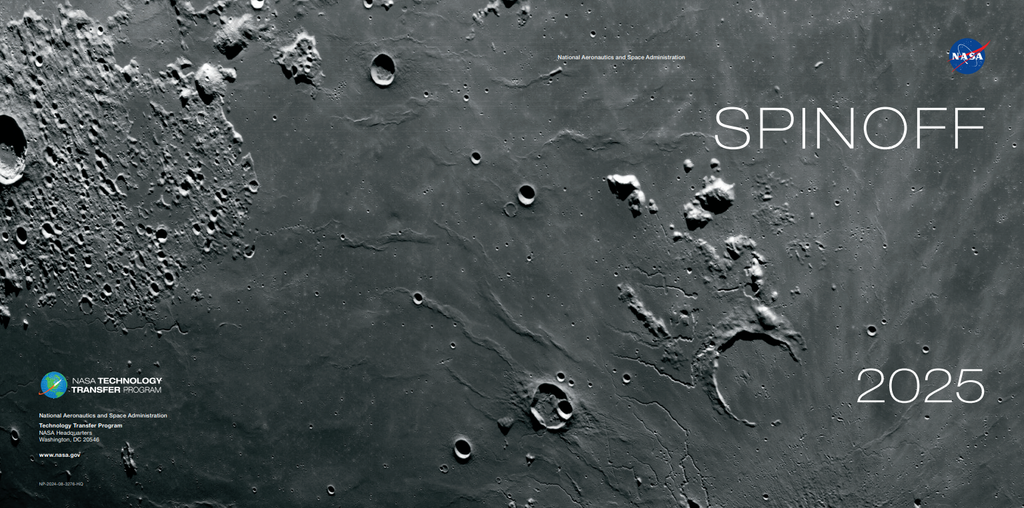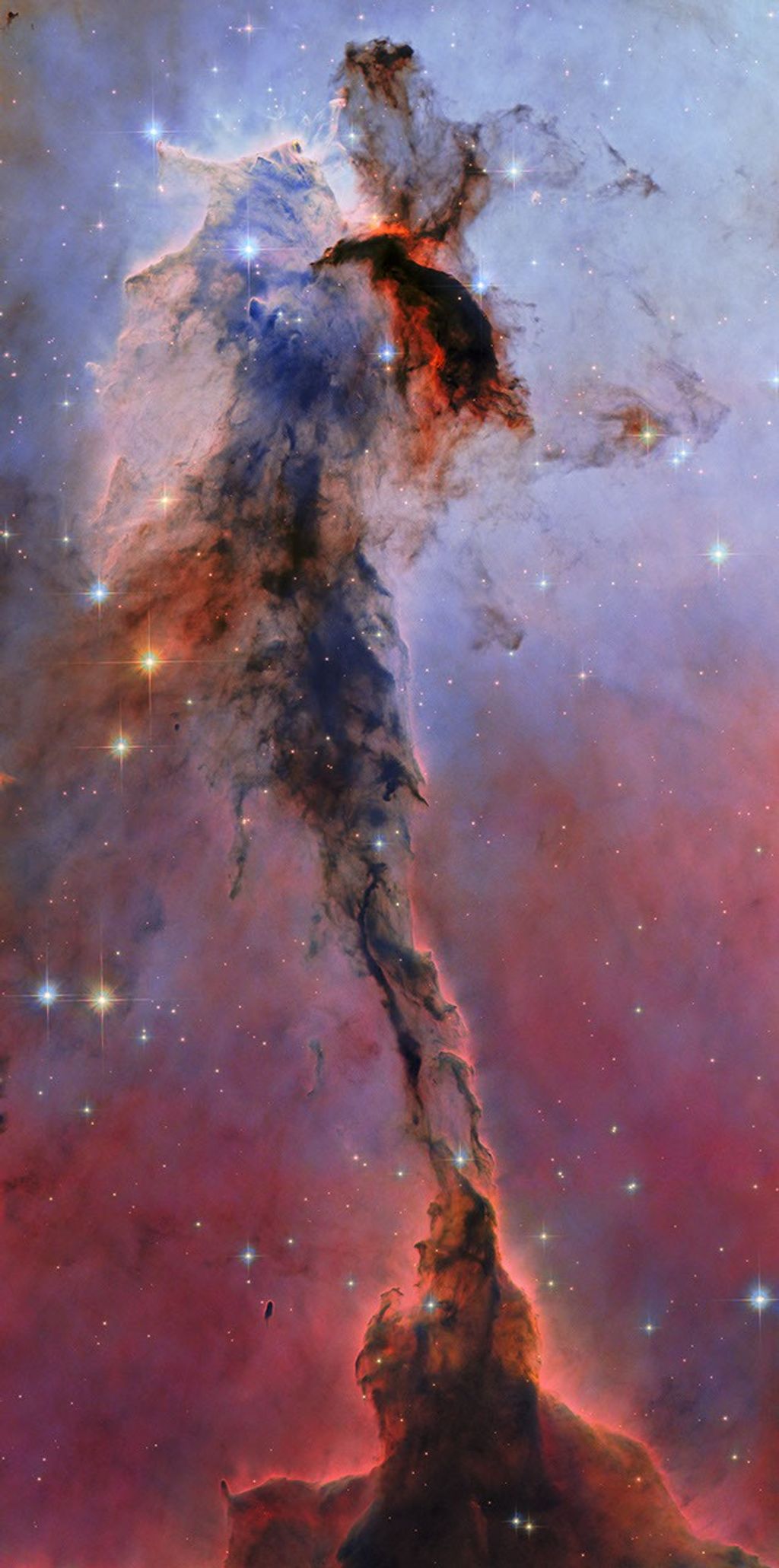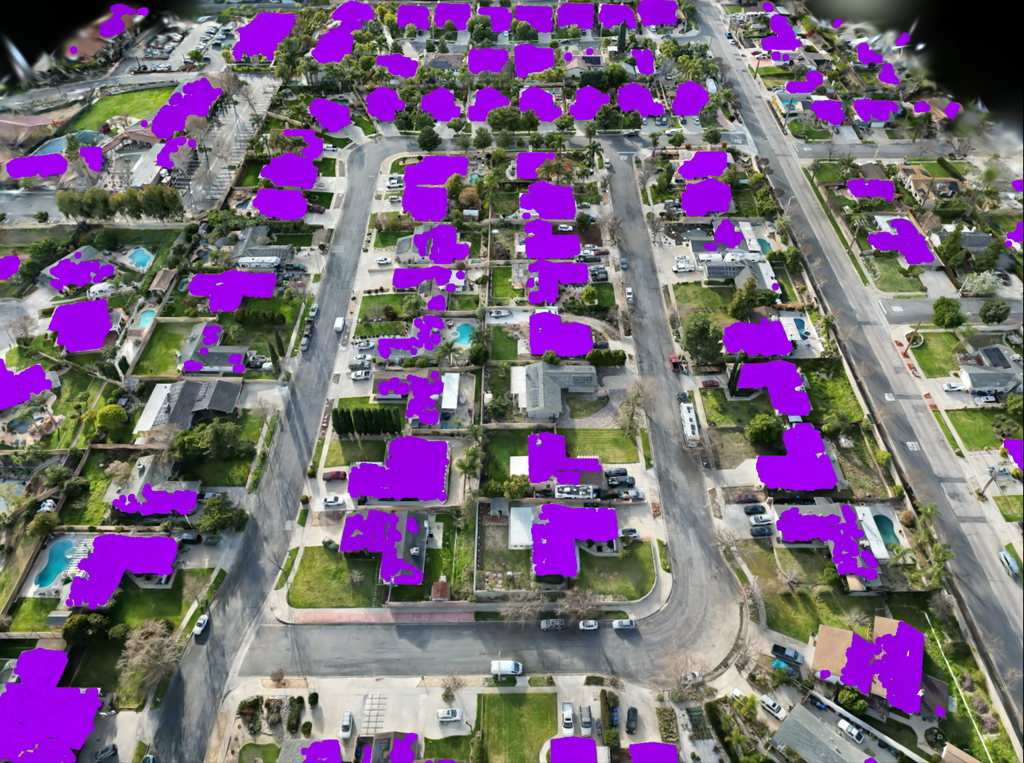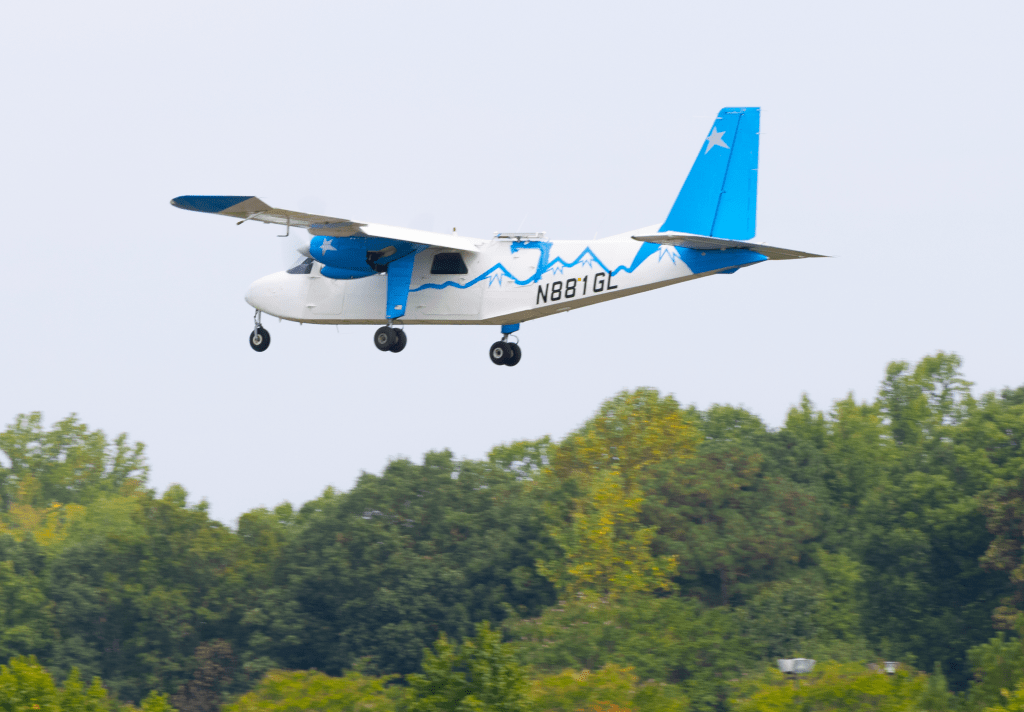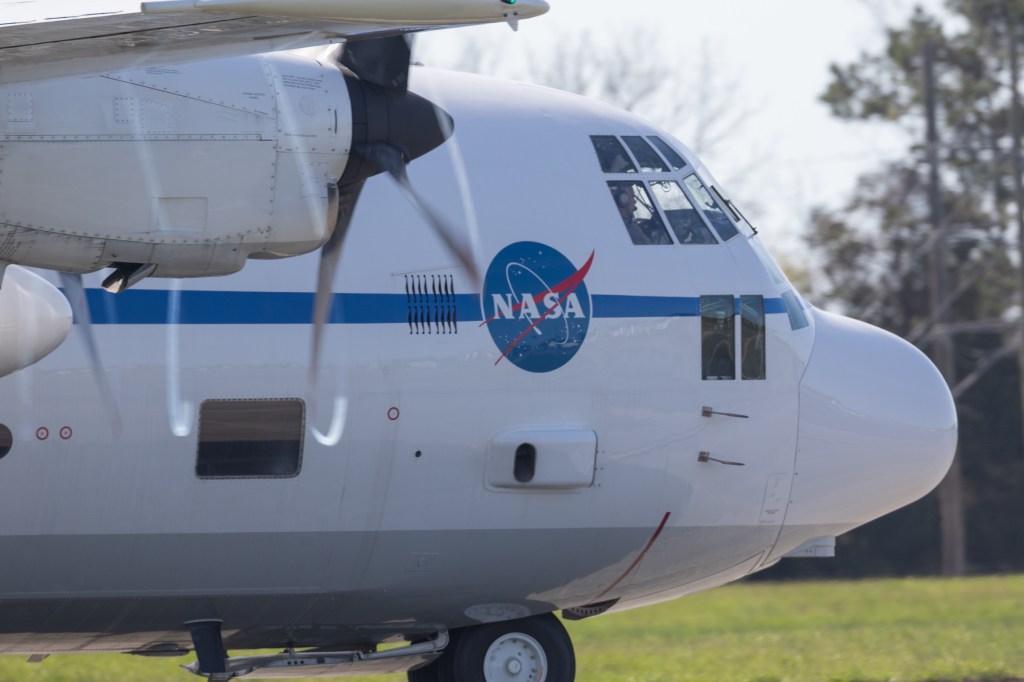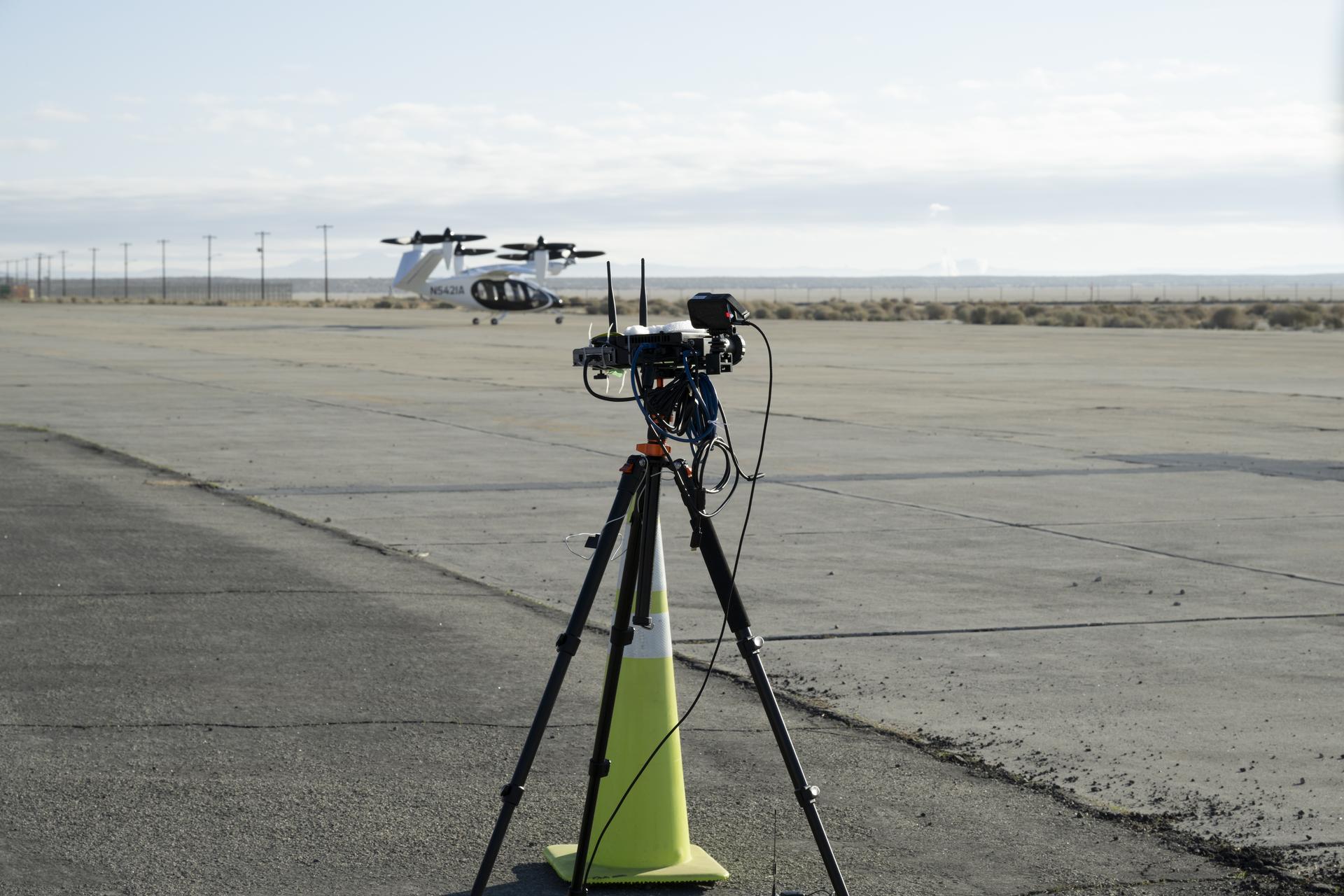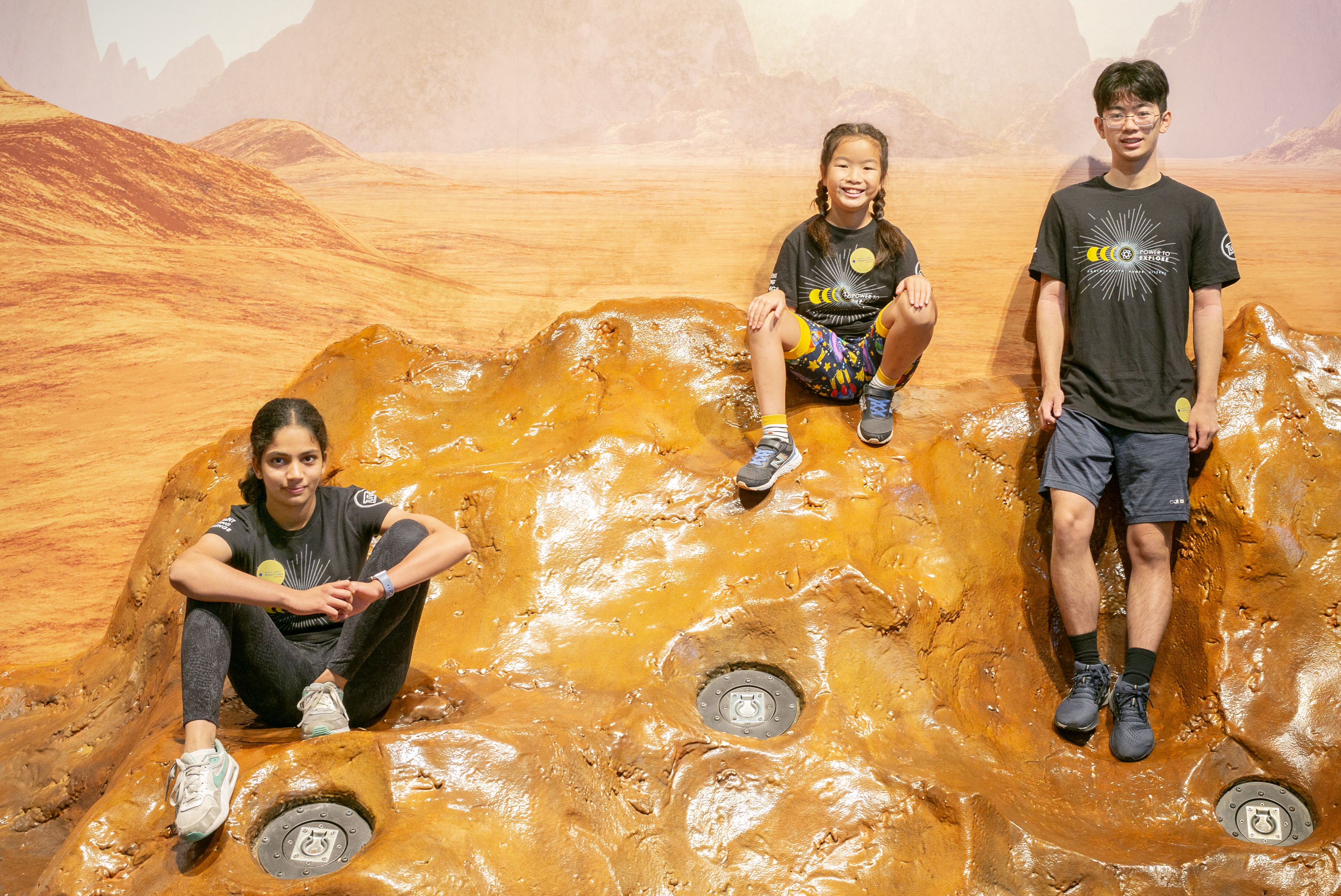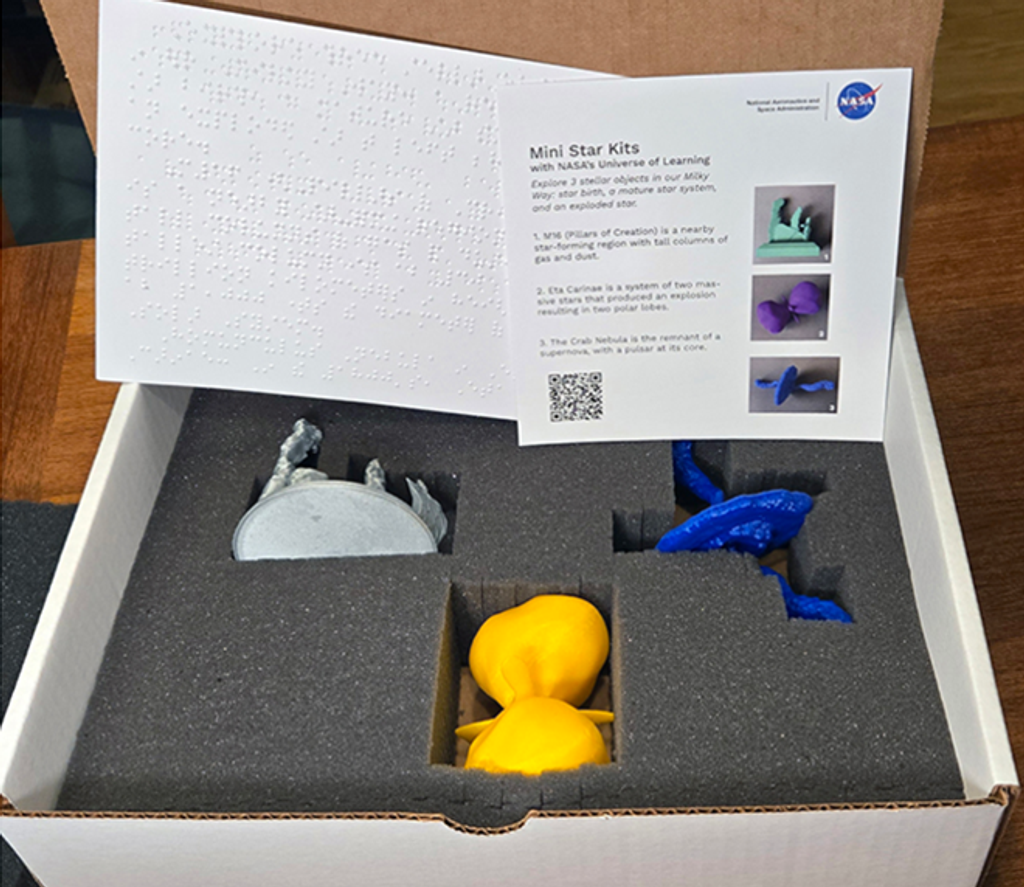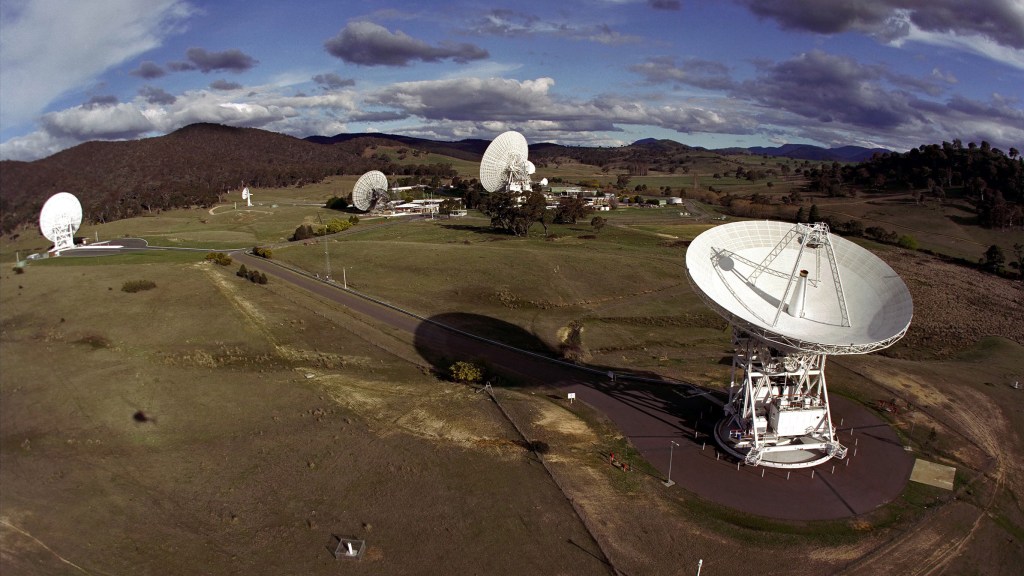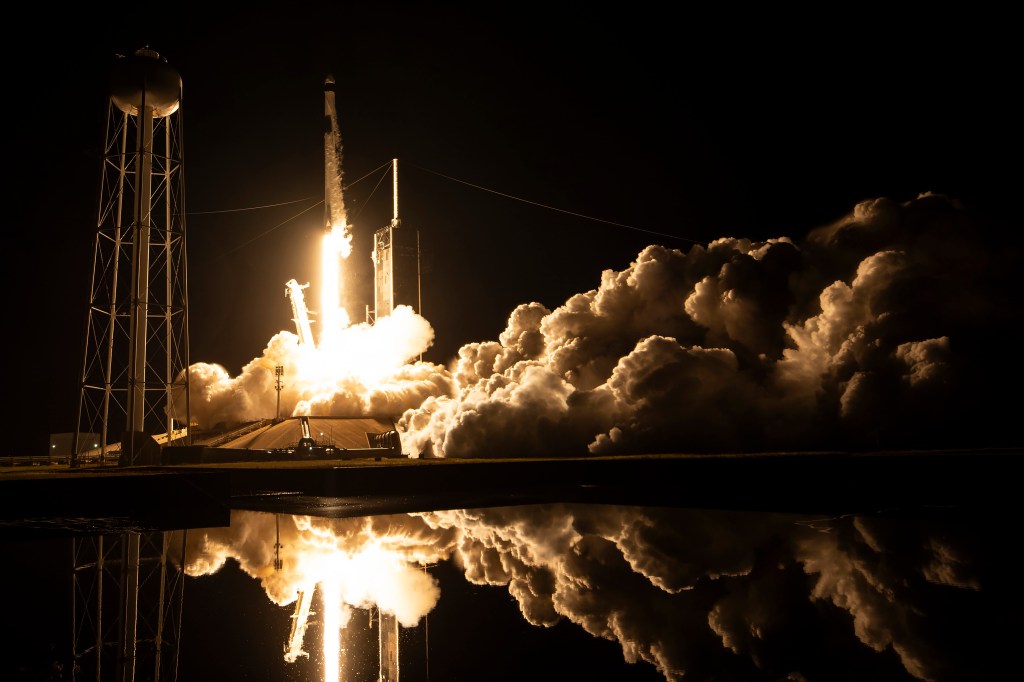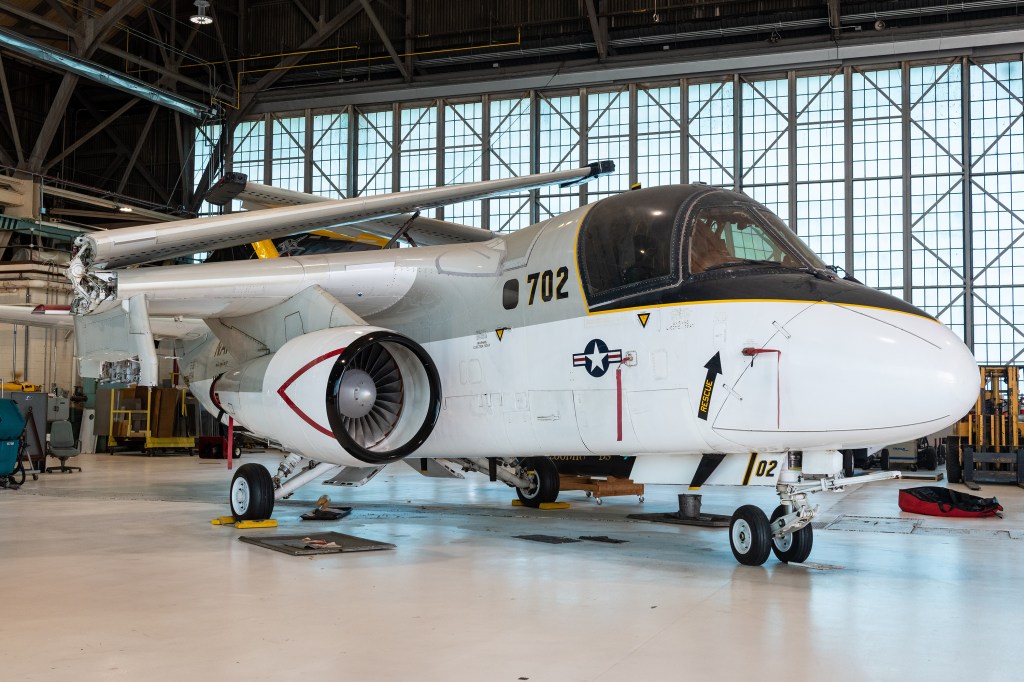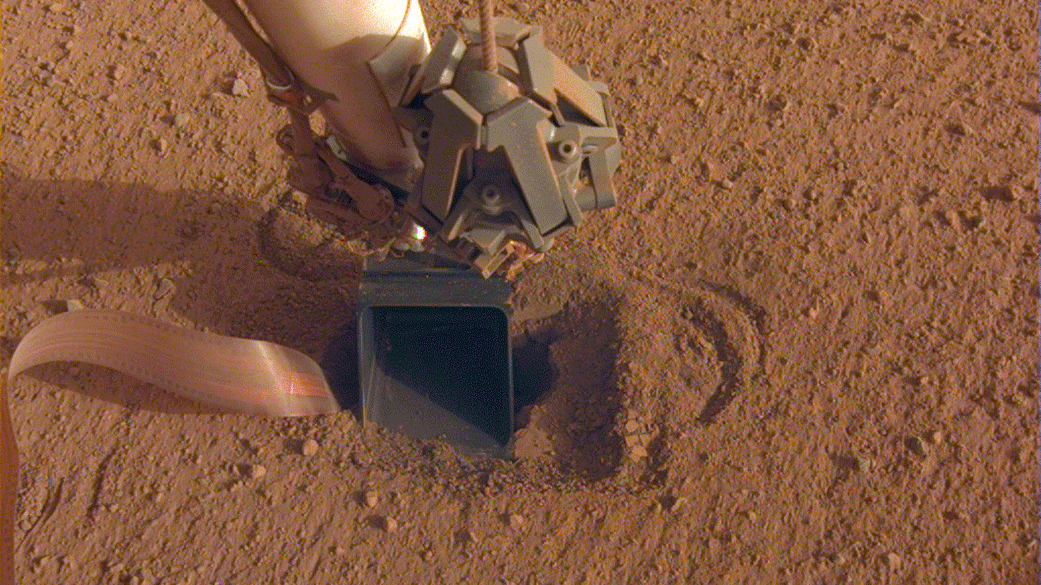NASA’s InSight lander has been using its robotic arm to help the heat probe known as the “mole” burrow into Mars. The mission is providing the first look at the Red Planet’s deep interior to reveal details about the formation of Mars and, ultimately, all rocky planets, including Earth.
Akin to a 16-inch-long (40-centimeter-long) pile driver, the self-hammering mole has experienced difficulty getting into the Martian soil since February 2019. It’s mostly buried now, thanks to recent efforts to push down on the mole with the scoop on the end of the robotic arm. But whether it will be able to dig deep enough – at least 10 feet (3 meters) – to get an accurate temperature reading of the planet remains to be seen. Images taken by InSight during a Saturday, June 20, hammering session show bits of soil jostling within the scoop – possible evidence that the mole had begun bouncing in place, knocking the bottom of the scoop.
While the campaign to save the mole continues, the arm will be used to help carry out other science and engineering work. Here’s what you can expect in the months ahead from the mission, which is led by NASA’s Jet Propulsion Laboratory in Southern California.
What’s next for the mole?
The mole is part of an instrument called the Heat Flow and Physical Properties Package, or HP3, that the German Aerospace Center (DLR) provided NASA. While the scoop on the end of InSight’s arm has blocked the mole from backing out of its pit again, it also blocks the arm’s camera from seeing the mole and the pit that has formed around it. Over the next few weeks, the team will move the arm out of the way to better assess how the soil and mole are interacting.
The mole needs friction from soil in order to burrow. Ironically, loose soil provides that friction as it collapses around the mole. But the soil beneath InSight has proven to be cement-like duricrust, with dirt granules that stick together. As a result, recoil from the mole’s self-hammering action causes it to bounce in place. So the team’s next moves may be to provide that friction by scraping or chopping nearby soil to move it into the pit it’s in.
More thoughts about the mole’s recent progress can be found on a blog written by HP3’s principal investigator, Tilman Spohn of DLR.
What’s next for InSight’s arm?
InSight landed on Mars on Nov. 26, 2018. Its robotic arm subsequently set HP3, a seismometer and the seismometer’s Wind and Thermal Shield on to the planet’s surface. While the arm has been key to helping the mole, scientists and engineers are eager to use the arm’s camera to pan over InSight’s solar panels, something they haven’t done since July 17, 2019.
It’s the dusty season on Mars, and the panels are likely coated with a fine layer of reddish-brown particles. Estimating how much dust is on the solar panels will let engineers better understand InSight’s daily power supply.
Scientists also want to resume using the arm to spot meteors streaking across the night sky, as they did earlier in the mission. Doing so could help them predict how often meteors strike this part of the planet. They could also cross-check to see whether data from InSight’s seismometer reveals a meteor impact on Mars shortly afterward.
What’s next for the seismometer?
InSight’s seismometer, called the Seismic Experiment for Interior Structure (SEIS), detected its first marsquake nearly three months after starting its measurements in January 2019. By the fall of 2019, it was detecting a potential quake or two per day. While SEIS has detected more than 480 seismic signals overall, the rate has dropped to less than one per week.
This rate change is tied to seasonal variations of atmospheric turbulence, which creates noise that covers up the tiny quake signals. Despite the protective Wind and Thermal Shield, SEIS is sensitive enough that shaking from the wind hitting the shield can make quakes harder to isolate.
More About InSight
JPL manages InSight for NASA’s Science Mission Directorate. InSight is part of NASA’s Discovery Program, managed by the agency’s Marshall Space Flight Center in Huntsville, Alabama. Lockheed Martin Space in Denver built the InSight spacecraft, including its cruise stage and lander, and supports spacecraft operations for the mission.
A number of European partners, including France’s Centre National d’Études Spatiales (CNES) and the German Aerospace Center (DLR), are supporting the InSight mission. CNES provided the Seismic Experiment for Interior Structure (SEIS) instrument to NASA, with the principal investigator at IPGP (Institut de Physique du Globe de Paris). Significant contributions for SEIS came from IPGP; the Max Planck Institute for Solar System Research (MPS) in Germany; the Swiss Federal Institute of Technology (ETH Zurich) in Switzerland; Imperial College London and Oxford University in the United Kingdom; and JPL. DLR provided the Heat Flow and Physical Properties Package (HP3) instrument, with significant contributions from the Space Research Center (CBK) of the Polish Academy of Sciences and Astronika in Poland. Spain’s Centro de Astrobiología (CAB) supplied the temperature and wind sensors.
Andrew Good
Jet Propulsion Laboratory, Pasadena, Calif.
818-393-2433
andrew.c.good@jpl.nasa.gov
Alana Johnson / Grey Hautaluoma
NASA Headquarters, Washington
202-672-4780 / 202-358-0668
alana.r.johnson@nasa.gov / grey.hautaluoma-1@nasa.gov
2020-124

